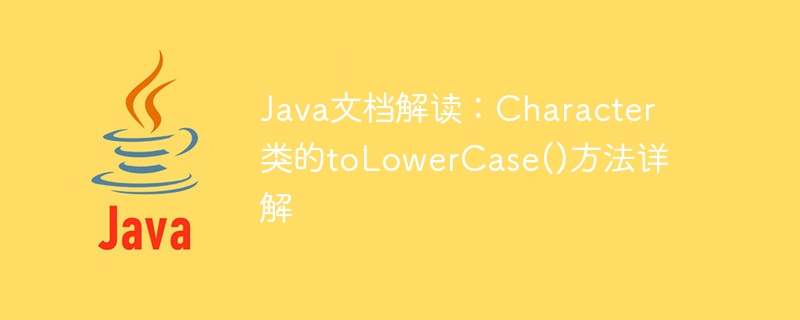

In Java character processing, the Character class is an important class, which provides many methods to process characters. One of these methods is toLowerCase(), which converts a character to lowercase and back. This article will analyze this method in detail and give code examples.
The toLowerCase() method is a static method in the Character class, and its declaration is as follows:
public static char toLowerCase(char ch)
This method receives a char type Parameters are taken as input and a char result is returned, representing the lowercase form of the character. If the character is already lowercase, the character itself is returned.
The implementation of the toLowerCase() method is related to the specific character encoding. Java uses Unicode encoding by default. Unicode encoding is a relatively universal character encoding that supports almost all characters including Chinese. In Unicode encoding, the encoding of uppercase and lowercase letters is continuous. For example, the encoding of uppercase 'A' is 65, and the encoding of lowercase 'a' is 97. Therefore, for an uppercase letter, you can get the corresponding lowercase letter by adding 32 to its encoding.
In Java, the implementation of the toLowerCase() method is as follows:
public static char toLowerCase(char ch) { if (ch >= 'A' && ch <= 'Z') { return (char)(ch + 32); } else { return ch; } }
As you can see, this method first determines whether the entered character is an uppercase letter, and if so, adds its encoding 32 to get the corresponding lowercase letters. Otherwise, the character is returned directly.
The following are some code examples showing the use and effect of the toLowerCase() method. Among them, all English letters are used in the examples, but this method is also applicable to other Unicode-encoded characters.
char ch1 = 'A'; char ch2 = 'a'; char ch3 = 'Z'; char ch4 = 'z'; System.out.println(Character.toLowerCase(ch1)); // 输出'a' System.out.println(Character.toLowerCase(ch2)); // 输出'a' System.out.println(Character.toLowerCase(ch3)); // 输出'z' System.out.println(Character.toLowerCase(ch4)); // 输出'z'
You can see that by calling the toLowerCase() method, uppercase letters are converted to lowercase letters, while lowercase letters and other characters are not affected.
The toLowerCase() method of the Character class is a simple and practical method that can convert an uppercase letter into the corresponding lowercase letter. Its implementation is based on Unicode encoding, adding 32 to the uppercase letter encoding to obtain the corresponding lowercase letter. The use of this method is very simple, you only need to pass in a char parameter. In practical applications, the toLowerCase() method has been widely used and can help us quickly process characters.
The above is the detailed content of Interpretation of Java documentation: Detailed explanation of the toLowerCase() method of the Character class. For more information, please follow other related articles on the PHP Chinese website!




